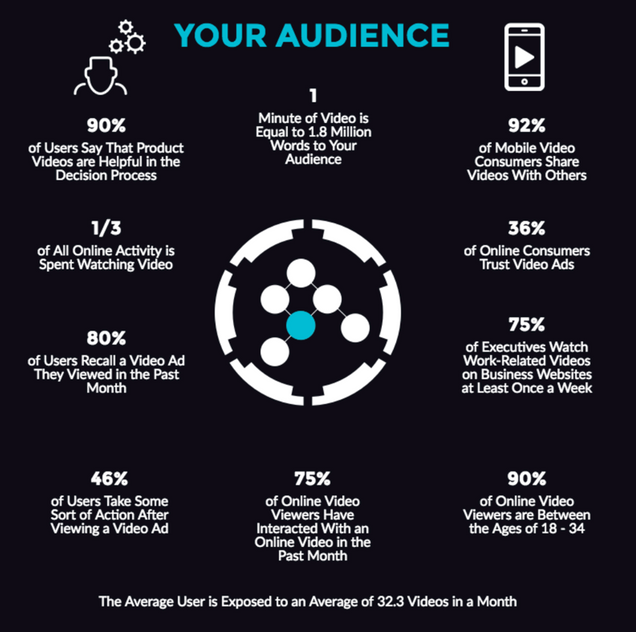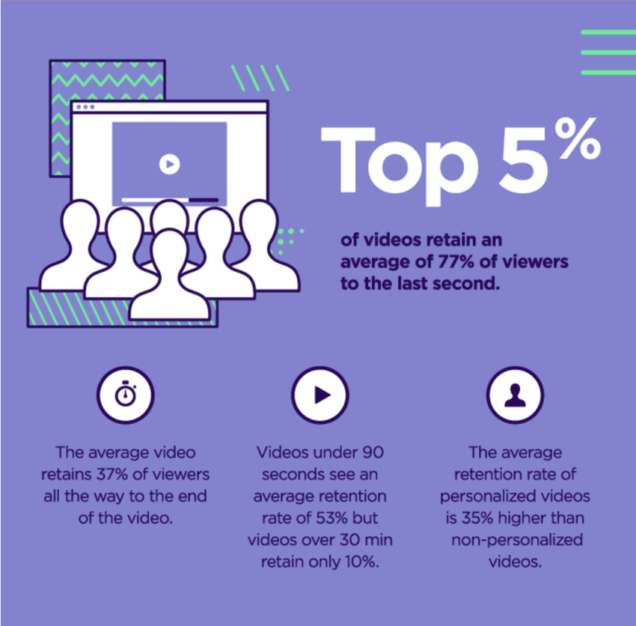By Angela Hu, Director at PRLab
[ Source: Meme Generator, https://memegenerator.net/instance/80839062 ]
Over the past few decades, the emergence of the Internet has drastically changed the nature of the PR industry. With the increasing emphasis on content creation, social media management, and search engine marketing (SEM), the time has come for us PR professionals to shift our focus away from traditional PR tactics like writing press releases and media pitches, and start looking for better ways to keep our audience engaged and motivated through digital PR efforts. One of the most important channels that we cannot overlook in the battle of audience outreach is video.
The video is a highly visual tool that gives us ample opportunities to convey powerful stories, engage with our audiences, and increase our brand awareness. In 2017, consumers are interacting with videos today more than ever. According to Hubspot, at least 43% of consumers want to see more video content from companies, and 51.9% of marketers worldwide consider video to be the type of content with the highest ROI. Therefore, if you have not yet incorporated video into your communications strategy, you are probably behind in the game.
Why is video important in today’s PR?
The digital public relations world can be summed up into a combination of on-site search engine optimization (SEO) and social media optimization (SMO).
Social media is an essential tool for establishing a brand image and increasing brand loyalty. People love to comment on and share content with their friends on social media, making word-of-mouth promotion more potent than ever. Data collected by the social media management platform Buffer in 2014 shows that visual content is 40 times more likely to be shared on social media than any other type of content.
Apart from social media, video content also increases your Google search ranking. Getting onto Google’s first page of search results with organic content is a difficult task. Google is factoring the quality and relevance of video content into its algorithm more and more. According to a Forrester study, a website with a video can increase its chances of appearing on Google’s first page by a factor of 53.
Moreover, videos are very appealing to mobile phone users. The number of mobile phone users is rapidly growing every year as people are getting more accustomed to viewing contents on the go. In fact, the number of mobile phone users is forecasted to reach 4.77 billion by the end of 2017 (Statista.com). Another statistic shows that 92% of mobile users tend to share videos with others (Rendrfx.com). Can you imagine how many conversations that will drive?
If done right, a video can be spread all over the world within a few days and generate millions of views. It will tremendously increase our brand awareness and attract lots of potential audiences.

[ Source: Rendrfx.com, 2017, http://www.rendrfx.com/video-marketing-statistics ]
Three Tips
Creating compelling video content for a brand is not easy. Here are some tips to help us make the most out of the video in today’s PR world.
1) Have the right tools
In the 20th century, videos must be produced in a formal setting with expensive film equipment and a professional setup that could easily cost tens of thousands of dollars. Nowadays, thanks to technological advancement, video production does not have to be expensive at all. After all, the value of a video is reflected more in its content and less in its visual quality. Regardless of its quality, a video without eye-catching content will be buried in the sea of content on the Internet, generating minimal results.
A good entry-level DSLR camera only costs about 300-500 dollars. Sometimes, a camera on a smartphone is already sufficient. Video editing software like Adobe Premier or Final Cut Pro for Mac systems is also becoming more user-friendly and easy to learn. One professional piece of equipment I would suggest you get is a microphone. Using an external microphone can tremendously increase the audio’s quality, especially when shooting outdoors with a noisy background, making the editing process easier.
2) Longer video does not mean better video

[ Source: Hubspot, 2017, https://blog.hubspot.com/marketing/video-marketing-statistics ]
Social media has changed the way people communicate. Twitter limits its posts to 270 characters, as short and concise sentences work better than longer ones; The same rule applies to video. Now, with more and more information available on a daily basis, people become very impatient. They do not have time to wait for the relevant results to come. They only want details that match exactly what they are looking for, and they want them instantaneously and painlessly. In fact, the reason people enjoy watching videos is that video allows them to consume more information with smaller efforts. An infographic compiled by Vidyard also shows that videos under 90 seconds long have an average retention rate of 53%, whereas videos over 30 minutes retain 10% of viewers. Therefore, we should keep our videos short and concise.
3) Optimize our video’s shareability among targeted customers
The easier we make it for our audiences to view our content, the more likely it is that they will take action by liking, sharing, or commenting on the content. To start, consider posting videos on multiple channels, including our company website and all social media handles. We can also incorporate sharing widgets on some websites to make sure audiences can easily share the content with their friends.
However, we should not be posting our content everywhere like the mass marketing method of the 20th century. Instead, today’s branding focuses on niche marketing toward a small section of customers who are willing to consume our content. Executing smart PR tactics nowadays requires us to swiftly identify and categorize the customers into different buyer persona, and deliver our content to the targeted consumers at the right time. We should analyze our customers thoroughly to understand the characteristics of each buyer persona, and target each buyer persona individually to effectively reach out to them and ensure those who are supposed to see the content are receiving it.
https://www.bu.edu/prlab/2017/11/28/using-video-to-complement-our-digital-pr-tactics-three-top-tips/




:quality(70)/cloudfront-us-east-1.images.arcpublishing.com/shawmedia/LVL4FQRSVX3XDVBSVHKTS7BE7A.jpg)